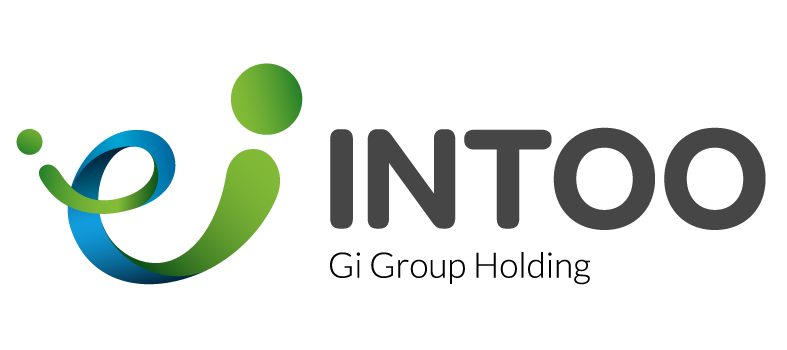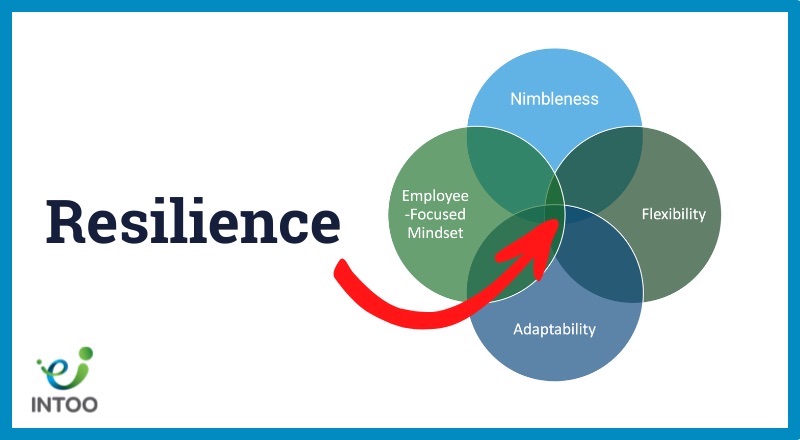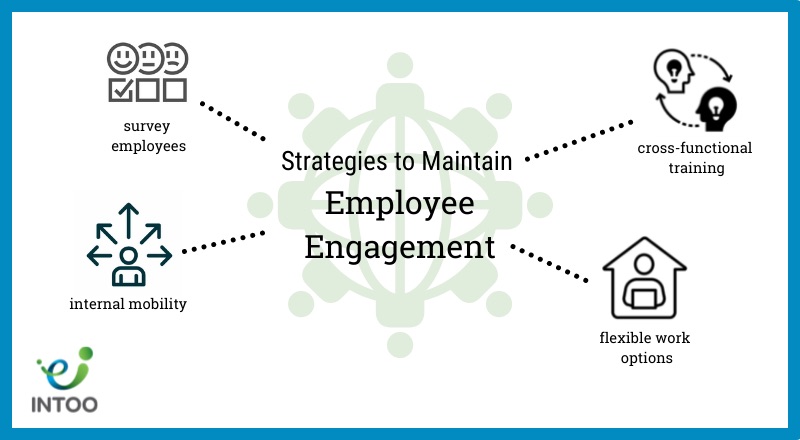In our quest to discover how the pandemic impacted organizations from HR’s point of view, INTOO surveyed HR professionals across the U.S. spanning every major industry. The insights were presented in our 2021 Workforce Trends Report.
We learned that employee engagement remained high or even increased along with the challenges, as most companies adapted to an alternative work model, such as fully remote or hybrid environments. Shifting roles and responsibilities likely also contributed to greater engagement, as workers needed to learn or increase skills needed to adapt to changing business needs.
One thing is for certain: the pandemic put the focus on the employee where it might not have been before. How, where, and when an employee works and how these conditions affect productivity and engagement are being given greater consideration, especially as companies struggle to attract and retain employees.
What was done right during the pandemic, and what can be learned from those who succeeded? Below we dissect the traits that served organizations the best during the pandemic, and how they can be applied for increased employee engagement.
The traits that helped organizations be resilient during the pandemic
Certain traits came into focus as contributing to an organization’s business continuity during the pandemic.
Nimbleness
A successful organization was one that could shift roles and responsibilities among its employees when layoffs, furloughs, hiring freezes along, or new work environments demanded changes.
Flexibility
With the sudden need for parents to help with remote learning, couples or roommates competing for workspace at home, and—in some cases, for many employees—increased availability at different hours, organizations that were flexible in how and when employees worked experienced gains in engagement, satisfaction, and productivity.
Adaptability
Throughout the first year of the pandemic, conditions and rules changed frequently, triggering the need for continual adaptation to events. Companies that were equipped to adapt maintained stability and continued to move forward successfully.
Employee-Focused Mindset
A majority of respondents reported that their organizations used a different work model during the pandemic and that they experienced the same or higher levels of productivity. Offering flexible work options empowers employees to do their best work and worry less about conflicting personal responsibilities and long commutes. Additionally, focusing on internal mobility shows employees that their employer is invested in their futures, creating greater satisfaction and loyalty.
4 Strategies to Maintain Employee Engagement
Survey your workforce
Our study found that employers’ needs for the coming year and their plans to address them didn’t align. You can stay ahead of this potential problem by keeping a pulse on the concerns, wants, and needs of your employees. By performing routine surveys of your workforce, you can stay current with what’s top-of-mind for your employees, head off any problems that could lead to disengagement, and incorporate their feedback into plans for the future. In addition, by acting on the responses from your employees, you demonstrate that you value them.
Utilize cross-functional training
Having a change management plan in place is a best practice for any business. That plan should include having more than one person who knows how to perform a job. In fact, this practice is good sense not only in case of disaster, but also for the engagement and growth of your team. The more employees know about how things work in the business, the more invested they are in its success and the more they want to participate in its achievements. Of course, if another pandemic or other disaster strikes, skill diversity and cross-functional development will allow you to quickly maneuver your teams to respond and conduct business more or less as usual.
Invest in internal mobility
Upskilling and reskilling your employees increases their nimbleness for when responsibilities need to shift. They also allow your workforce to develop their careers with you, increasing their investment in and engagement with your organization. These new or more developed skills allow employees to shift laterally or to grow. Internal mobility programs can even be used to build leadership from within, which is helpful not only for engagement but also for succession planning.
Some may argue that professional development takes up valuable work time, but the gains achieved by having a more knowledgeable, skilled workforce will more than make up for it. After all, a more adept employee will theoretically need less time to accomplish a task.
Consider incorporating flexible work options for good
Employees want and need an adequate work-life balance to stay productive. Removing obstacles to being productive also increases engagement. It turns out that when employees build their work around their lives instead of the reverse, their productivity at work increases. Another benefit of location flexibility is that it increases the likelihood of a diverse workforce.
Prior to the pandemic, INTOO had offices on two coasts, although team members were spread across the country. INTOO went completely virtual at the start of the pandemic and decided several months in to make that change permanent. Feedback showed that team members favored the flexibility of a remote environment and didn’t believe that being in-office would make a significant difference in productivity or performance. To date, that speculation has proven true. In fact, our technology team has been measurably more productive and employee engagement has increased overall.
Additional hires conducted during the pandemic were brought on without regard to location. We transitioned smoothly to a remote environment by fostering open communication and by incorporating virtual team events to build our corporate culture.
In Summary, Meet Your Employees Where They Are
Be creative with how you approach the workday and the needs of your workforce. While remote or hybrid work environments aren’t possible for every organization, meeting employees where they are with a consideration for their lives outside of work and their professional goals goes a long way to increasing employee engagement.
Can hours be flexible? Perhaps a company-wide week of vacation would enable those who normally struggle to take time off get the rest they need to rejuvenate and be more productive upon their return.
Do they feel stuck in a grind in their current roles? Help them create a strategy for career growth by providing them with opportunities for upskilling and mentorship.
An inspired and flexible approach to workforce management will help your employees feel that their input matters, that they’re important to the company, and that their work can make a valuable contribution to the success of the organization. It will also enable your company to respond to unexpected events, should they arise, with greater ease and fewer obstacles, while maintaining or even increasing productivity and engagement. If you are considering offering your employees upskilling and other career development resources, INTOO can help. Contact us to learn how we can build a customizable solution for your organization.
Robyn Kern is a seasoned business writer who has written in the HR, education, technology, and nonprofit spaces. She writes about topics including outplacement, layoffs, career development, internal mobility, candidate experience, succession planning, talent acquisition, and more, with the goal of surfacing workforce trends and educating the HR community on these key topics. Her work has been featured on hrforhr.org and trainingindustry.com.













